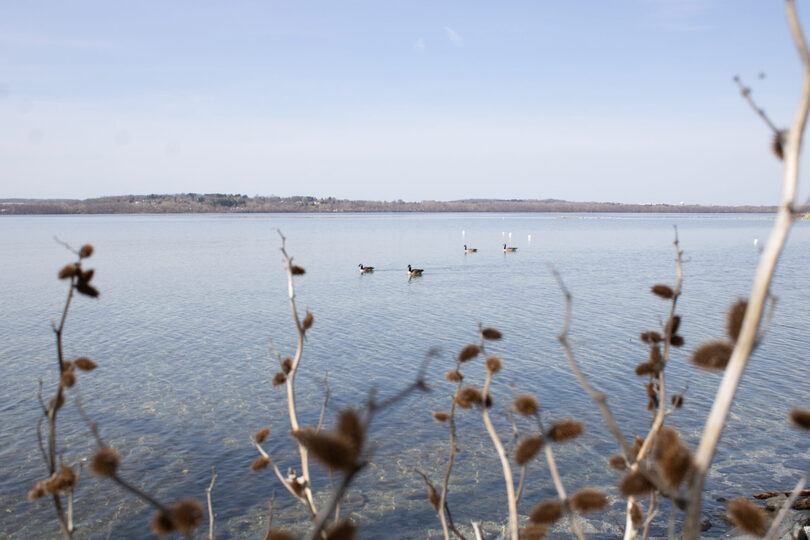Proposed state bill would centralize harmful algal bloom reporting

Wendy Wang | Daily Orange File Photo
There were two reported cases in 2023 of harmful algal blooms reported in Onondaga Lake. The HABMAP Act would establish a centralized system for reporting potential and known cases.
Get the latest Syracuse news delivered right to your inbox.
Subscribe to our newsletter here.
Senator Rachel May (D-48) and Assemblymember Anna Kelles (D-125) introduced the Harmful Algal Bloom Monitoring and Prevention Act on Jan. 22. The bill looks to amend New York conservation law to prevent and mitigate harmful algal blooms (HABs), according to a Monday press release.
The HABMAP Act would establish a centralized system for reporting potential and known cases of HABs as well as intervention information and funding resources. The data would allow the state to “administer a grant program supporting data-driven best practices in preventing and mitigating harmful algal blooms,” according to the press release.
Not all algae are harmful, but HABs occur when algae systems grow out of control. The blooms also “produce extremely dangerous toxins” that come in contact with contaminated water. HABs can be blue, green, brown or red, look “scummy” or like “paint on the surface of the water,” according to the United States Environmental Protection Agency.
Harmful algae is caused by excess nitrogen and phosphorus entering the water supply. These contaminants come from animal manure and chemical fertilizers, as well as stormwater, wastewater, fossil fuels and certain soaps and detergents. NY state has about 500 concentrated animal-feeding operations that discharge waste into the water. CAFOs are regulated to protect surface water and groundwater supply from nitrate and phosphorus, but the contaminants still affect the water.
Syracuse Mayor Ben Walsh and State Sen. John Mannion introduced a similar algal bloom detection pilot program on Skaneateles Lake in 2021. The pilot received $100,000 of state funding and was in partnership with the Skaneateles Lake Association and SUNY ESF.
The program was a response to HABs on Skaneateles Lake, including a 2017 case that threatened drinking water. In 2023, Onondaga County had 43 reported cases of harmful blooms, including 19 on Skaneateles Lake, according to the NY State Department of Environmental Conservation.
“Our state’s freshwater resources are the envy of the world, but they are increasingly vulnerable to pollution and the effects of a warming climate. Every season, toxic algal blooms plague many New York lakes, causing a potentially dangerous situation for residents who depend on lakes for drinking water or use them for recreation,” May wrote in the press release.

Bridget Overby | Presentation Director
The bill looks to improve the available data related to HABs, which the press release states are currently unreported. If passed, the HABMAP Act would create NY’s first centralized resource for reporting and “dealing with” HABs.
“Last summer, we saw the alarming rate at which Harmful Algal Blooms (HABs) were affecting recreation, wildlife, and drinking water in Cayuga Lake and across the Finger Lakes Region and the State,” Kelles wrote in the press release.
The press release said that HABs were “once rare in the state,” but reported cases have recently increased. In 2022, the DEC reported over 1,000 cases in 204 bodies of water, which the press release said may be understating the problem due to underreporting.
The bill is being evaluated by the NY Senate’s Environmental Conservation Committee before it moves to the floor.
“If enacted, New York will be at the forefront of producing data that can be used to offer new insights for agencies, local governments, residents, and more, to reduce polluting runoff into our lakes,” the press release stated.





